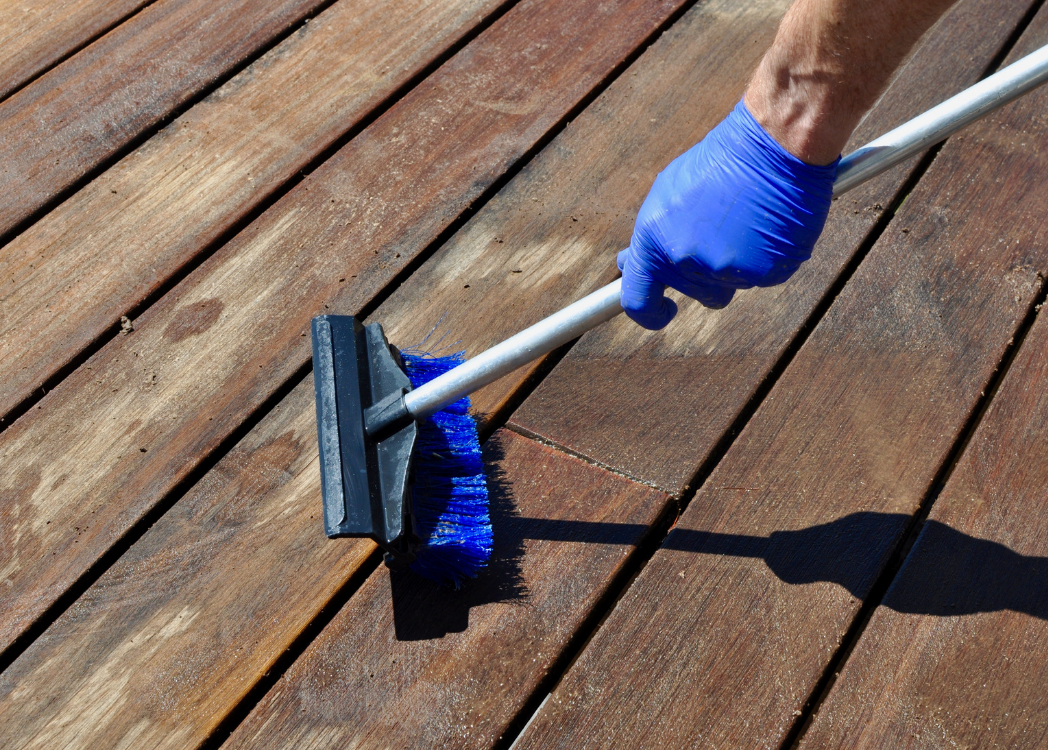Patio & Deck Protection: Sealing and Storing for Snow Season
Prep your outdoor space now—clean, seal, and cover to prevent costly damage during the freeze–thaw cycle.
Chicagoans know the rhythm of Midwest weather: one week you’re sipping coffee on the patio in a light sweater, the next you’re digging out boots for the season’s first snowfall. That sudden shift isn’t just hard on your wardrobe—it’s brutal on outdoor wood. Moisture seeps into tiny cracks, freezes, expands, and by spring those small gaps can split boards, rust fasteners, and leave a once-beautiful deck looking tired before its time.
The good news? A single weekend of thoughtful fall maintenance can prevent those costly repairs and keep your outdoor space ready for next year’s cookouts. Below, you’ll find a comprehensive guide to inspecting, sealing, and storing everything from the deck surface itself to the grill that powers your summer barbecues.
Why Fall Is the Critical Window for Deck Care
Chicago’s freeze–thaw cycle is particularly tough on outdoor wood and composite materials. When water gets into even the smallest hairline crack and freezes, it expands by about nine percent. Multiply that by dozens of melt–freeze cycles between November and March, and you’ve got warping, cupping, and splintering waiting for you in April.
In addition, leaves and other organic debris hold moisture against the wood’s surface. That dampness encourages mildew and can lead to soft spots that shorten the life of your deck or patio. Acting before sustained cold sets in—ideally late September through mid-October—gives sealants time to cure and ensures your deck is protected before the first serious frost.

Step 1: Inspect and Clean
Sweep and Wash
Start by removing everything from the deck: furniture, planters, rugs, and grills. Sweep thoroughly to clear leaves and dirt, then wash the surface with a deck cleaner or a mixture of mild soap and water. For stubborn mildew, a solution of oxygenated bleach works well and is safer than chlorine bleach on surrounding plants.
Look for Hidden Trouble
Once the surface is clean and dry, inspect every board and railing. Use a screwdriver or awl to gently probe suspect areas—soft spots indicate rot beneath the surface. Check fasteners for rust or looseness and tighten or replace as needed. Don’t forget the underside of the deck (if you can access it) and the stair stringers; moisture often lingers there longer.
Pro Tip: Many homeowners focus only on the walking surface. But damage often starts underneath where shade and lingering dampness slow drying.
Step 2: Seal or Stain
Timing Matters
Sealers and stains need temperatures above 50°F for at least 48 hours to cure properly. Aim for a stretch of dry weather—ideally with low humidity—so the wood can absorb the product fully.
Choose the Right Product
For Chicago’s harsh winters, a high-quality penetrating sealer or semi-transparent stain with built-in water repellant is the best choice. These products soak into the wood, creating a flexible barrier that resists peeling when the boards expand and contract.
Application Technique
Apply with a brush or pump sprayer, following the grain and working in small sections to maintain a wet edge and avoid lap marks. Two thin coats typically outperform a single heavy coat, allowing deeper penetration and more even protection.
Don’t Forget Railings and End Cuts
Moisture often enters through the ends of boards and along railings. Seal these areas carefully to prevent water intrusion.
Step 3: Protect Furniture and Grills
Outdoor furniture, planters, and grills all suffer in winter if left exposed. Proper storage or covering saves money and extends their life.
- Furniture: Clean surfaces and allow them to dry completely before covering or moving indoors. Stack chairs to reduce the footprint and keep covers from ballooning in the wind.
- Cushions: Store cushions in a dry indoor space or in waterproof bins to prevent mildew.
- Planters: Empty soil and water to avoid cracking from freezing expansion.
- Grills: A heavy-duty BBQ cover is a small investment that pays off big. It keeps snow and ice out, protects finishes, and makes spring cleaning far easier.
Quick Hack: If indoor storage is limited, cluster items together and secure covers tightly at the base to keep wind from lifting it.

Extra Steps for Composite Decking
Composite materials resist rot better than wood but still need care. Sweep and wash them just as you would a wooden deck. Check for gaps where debris can collect and cause staining. While most composite decks don’t require sealing, applying a manufacturer-approved protectant can help maintain color and sheen in Chicago’s intense sun-and-snow environment.
Maintenance Beyond the Surface
- Check Flashing: Inspect the metal or vinyl flashing where the deck meets the house. Gaps or corrosion can lead to water intrusion and interior leaks.
- Evaluate Drainage: Make sure downspouts direct water away from the deck. Ice dams near gutters can channel water onto the surface and under boards.
- Trim Nearby Plants: Overhanging branches and dense shrubs keep areas damp and encourage mildew.
These often-overlooked details help your sealing work last longer and protect your home’s structure.
The Spring Payoff
Spending a weekend on fall maintenance rewards you in April. A deck that was properly sealed in autumn will greet you with minimal staining and no structural surprises. Furniture will be clean and ready to use, and the grill will need only a quick wipe before the season’s first cookout.
The cost savings can be significant. Replacing even a few warped boards or repairing rotten joists easily exceeds the price of sealant and a few hours of work. More importantly, you’ll preserve the beauty and safety of a space that adds true value to your home.
Key Takeaways
- Chicago’s freeze–thaw cycle can destroy unprotected wood in a single winter.
- Inspect, clean, and seal decks in late September or October for the best results.
- Choose a penetrating stain or sealer designed for cold climates.
- Cover or store furniture and grills to prevent rust and mildew.
- Don’t overlook flashing, drainage, and plant trimming for full protection.
Preparing your patio or deck before winter is not just about preserving appearance—it’s about safeguarding your investment and avoiding the stress of costly repairs. With a free weekend and a few simple tools, you can protect your outdoor space so it’s ready to welcome friends and family the moment spring sunshine returns.

















